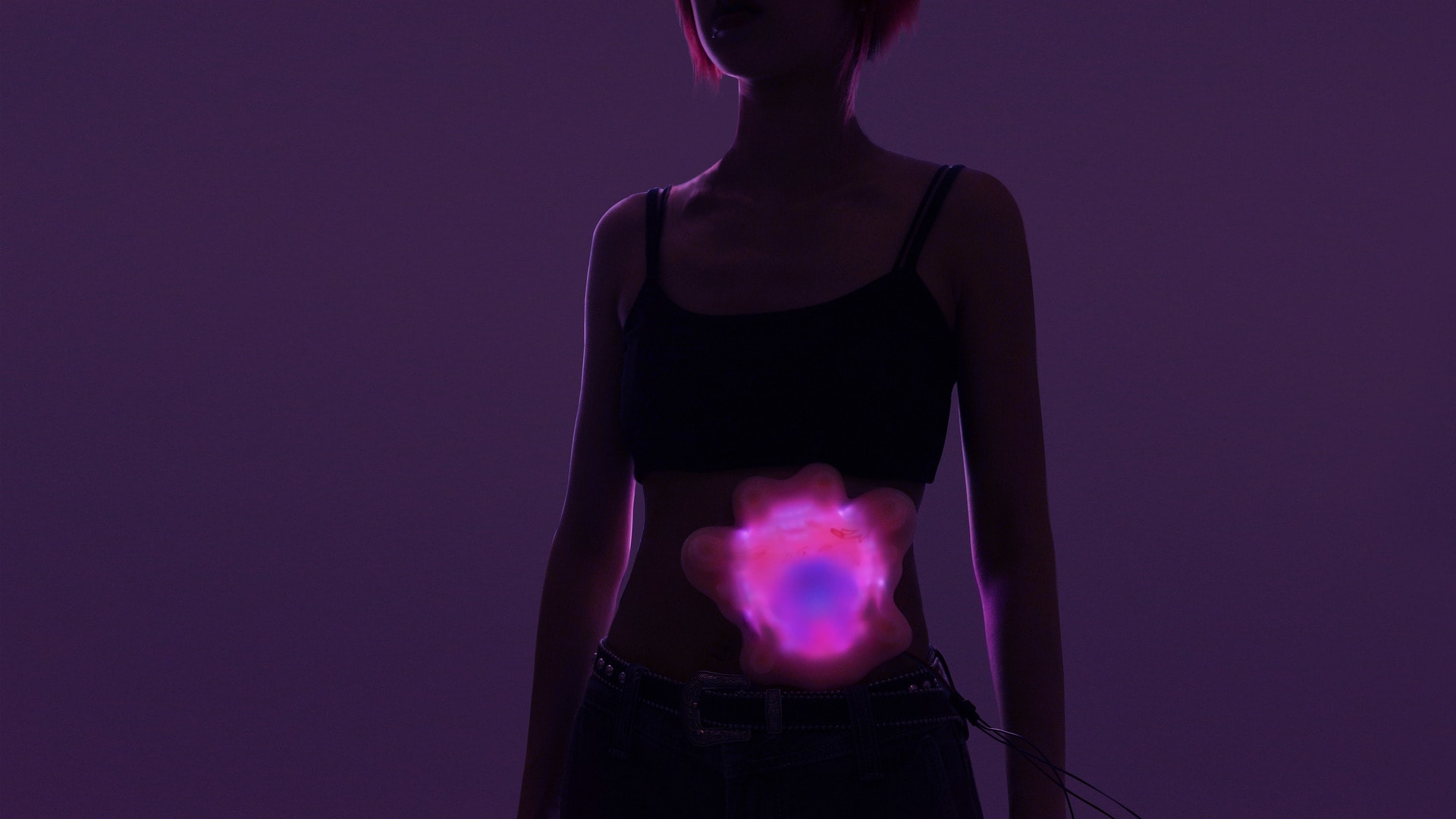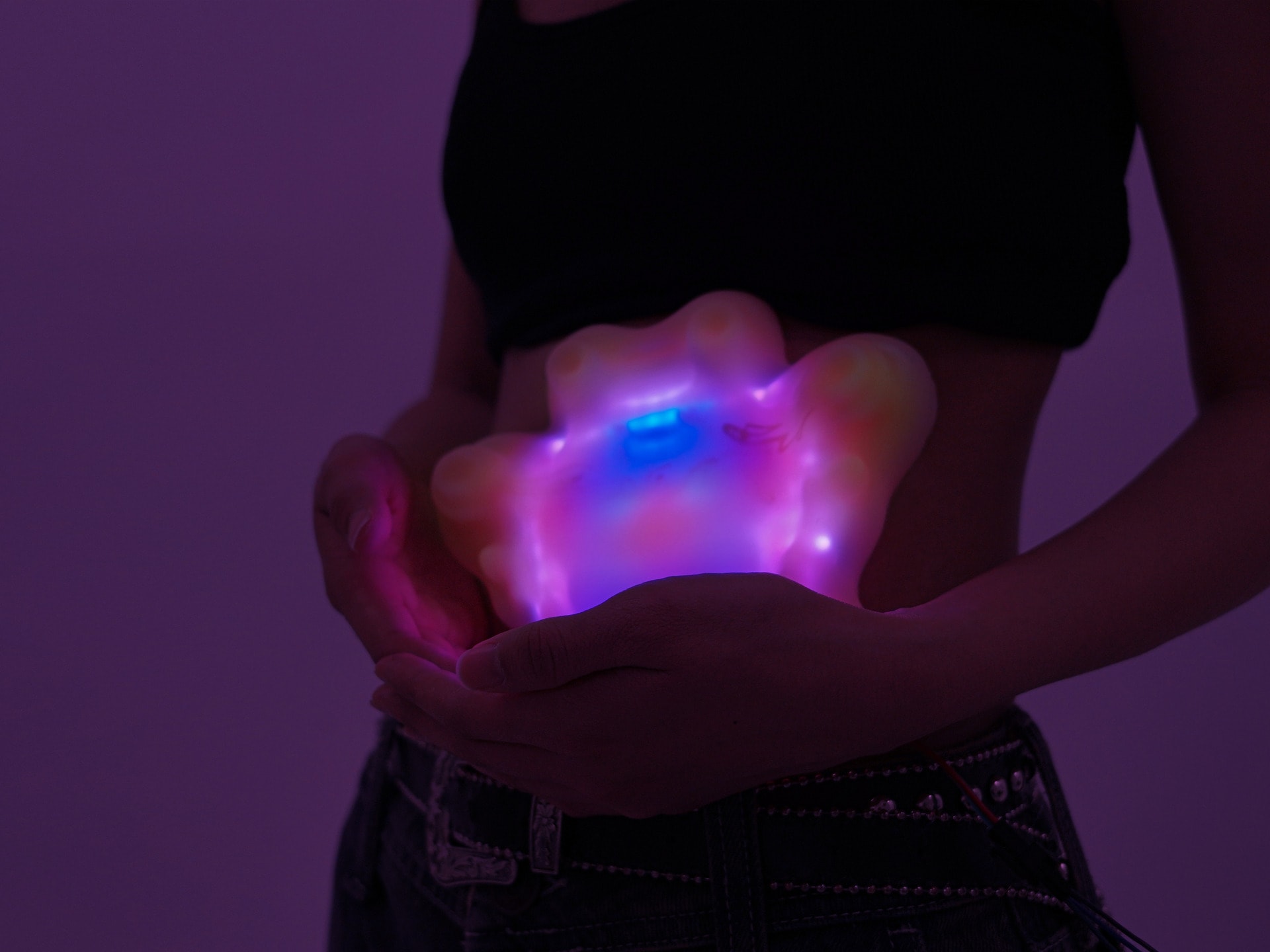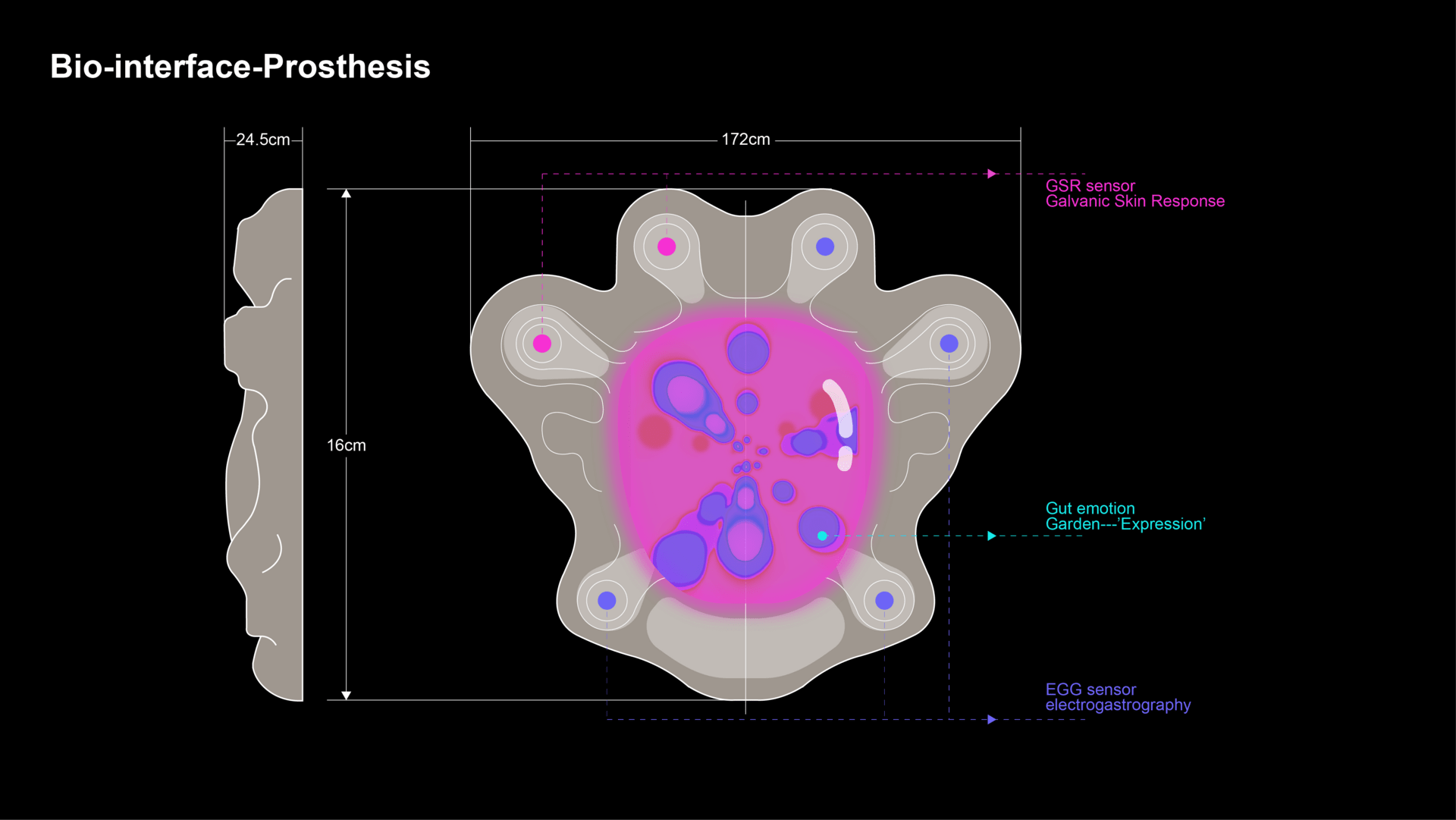Yingzhe Yang is a product and interaction designer from China. She focuses on the field of experience design. She is interested in multi-sensory design, the emotional and ambiguous relationship between products and the body, and how to extend the narrative meaning of products to users. At the same time, it is also exploring the application of different media and materials in products and vision, trying to use different new media tools to balance the relationship between organisms and infinite cyberspace.
Yingzhe Yang


In the study of emotions, people will focus on the theory of the brain, but they ignore that the gut is also a theatre for emotional processing and performance. Moreover, studies have shown that the microbiomes of depressed people differ significantly from those of the general population. Changes and imbalances in the gut bacterias could also cause adverse emotional responses.
Nowadays, the generation of emotions has gradually developed into a ''Microbiome-Gut-Brain Axis''. Therefore, the project put forward a hypothesis:
' what if we could use gut bacteria to reflect our emotion? '
Understand and express people's real emotions by decoding the language of gut microbes. Let the intestinal bacterias and the intestinal world become the recognizable "expression" of the future.
'X-Expression' is a project which tries to design a potential bio-digital wearable interface that integrates data from gut microbiota and intestinal movement using an existing bio-sensing capsule and physical sensors, and could transform them into a nuanced language of emotions. It could turn gut bacteria into the personal emotion recognition symbols.
Could this "expression" enable users to better understand the correlation between lifestyle and their emotional health, and improve their sense of emotional empowerment? Is it possible to improve the user's acceptance of their invisible emotions by communicating with this expression?

















